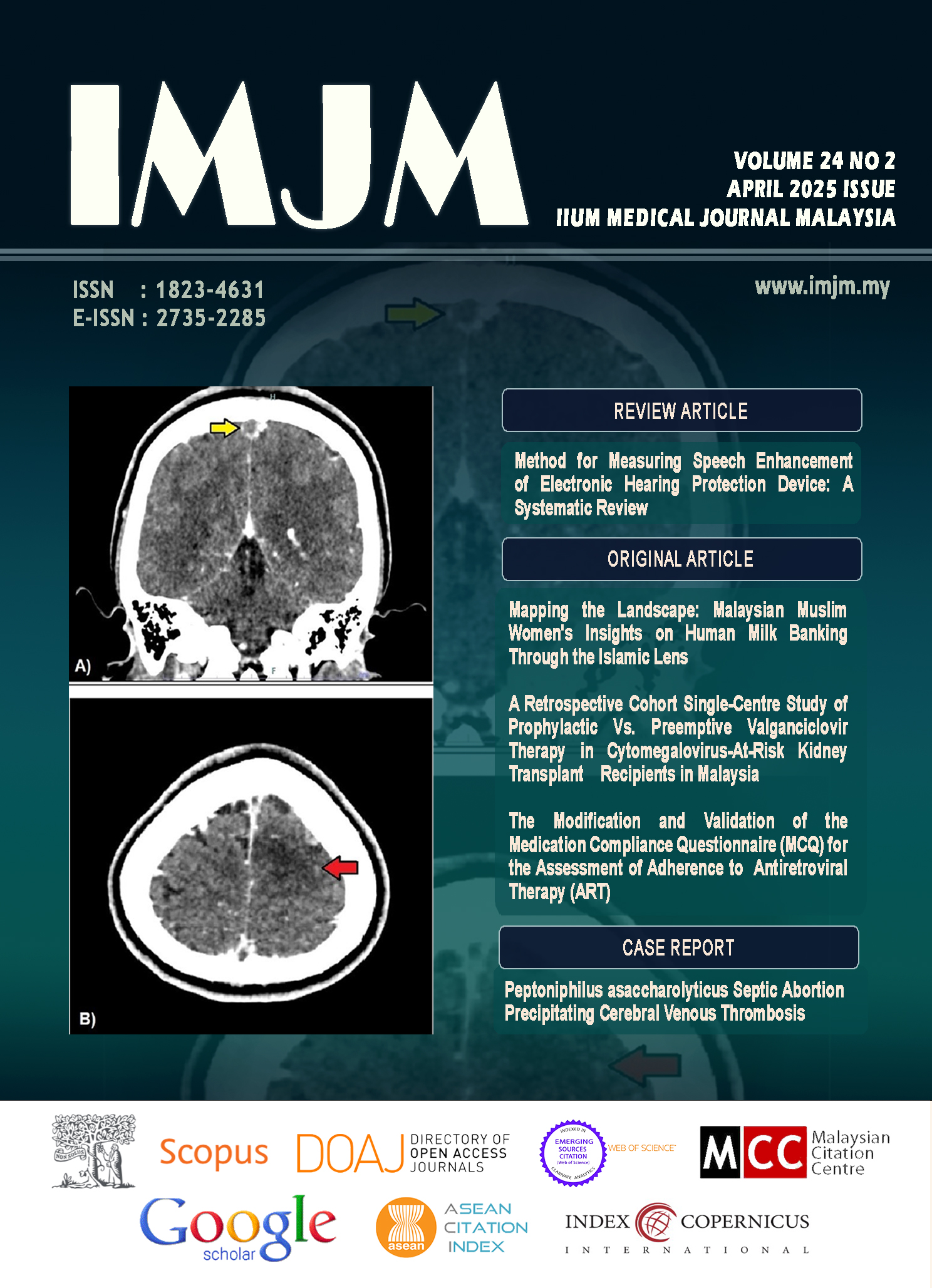Intestinal Barrier Integrity: The Essential Role of Neuropeptides and Their Implications in the Pathogenesis of Gastrointestinal Diseases
DOI:
https://doi.org/10.31436/imjm.v24i02.2712Keywords:
intestinal barrier, neuropeptide Y, vasoactive intestinal peptide, cholecystokinin, substance PAbstract
The intestinal barrier relies on tight junctions and proteins including claudins, occludins, and zonula occludens, helping to seal the epithelial cell gaps and hence controlling permeability. When tight junctions are disrupted, intestinal permeability increases, a condition recognised as "leaky gut." This condition is linked to gastrointestinal (GI) disorders including inflammatory bowel disease (IBD) and irritable bowel syndrome (IBS). Neuropeptides are crucial in modulating the tight junctions’ integrity within the GI epithelial barrier. This review focuses on neuropeptide Y, vasoactive intestinal peptide, cholecystokinin, and substance P in regulating intestinal barrier integrity. Studies included in this narrative review were selected based on their relevance to the topic, identified through searches in databases such as Google Scholar, PubMed, and Mendeley using relevant keywords. Understanding the mechanisms of these neuropeptides may provide pathophysiological insights and potential treatment strategies for restoring intestinal barrier integrity in GI disorders.
Downloads
Downloads
Published
How to Cite
Issue
Section
License
All material submitted for publication is assumed to be submitted exclusively to the IIUM Medical Journal Malaysia (IMJM) unless the contrary is stated. Manuscript decisions are based on a double-blinded peer review process. The Editor retains the right to determine the style and if necessary, edit and shorten any material accepted for publication.
IMJM retain copyright to all the articles published in the journal. All final ‘proof’ submissions must be accompanied by a completed Copyright Assignment Form, duly signed by all authors. The author(s) or copyright owner(s) irrevocably grant(s) to any third party, in advance and in perpetuity, the right to use, reproduce or disseminate the research article in its entirety or in part, in any format or medium, provided that no substantive errors are introduced in the process, proper attribution of authorship and correct citation details are given, and that the bibliographic details are not changed. If the article is reproduced or disseminated in part, this must be clearly and unequivocally indicated.










